How to Find Vintage Engagement Rings
September 13th, 2021 / Alese Oldenburg
Does your heart swoon at the sight of fancy filigree? Can you not get enough of romantic three stone engagement ring settings? If the answer is yes, a vintage-style engagement ring might be the right choice for you.

Featuring design elements from eras past, vintage engagement rings, also referred to as antique, offer a special sort of charm with their colorful gemstones and intricate details. In this article, we’ll explore the history behind vintage rings including which settings and stones are most commonly used and how to find vintage engagement rings that make your heart flutter.
What Is a Vintage Ring?
Technically speaking, the term “vintage” refers to a ring that is at least 20-30 years old, but less than 100 years old. These rings are typically previously owned, too.
However, and this is where things can get a little confusing, it’s not uncommon to see retailers selling vintage-inspired styles that are newly created and have never been worn before. These designs feature nods to eras past – think the Victorian, Edwardian and Art Deco period – with elaborate design elements like fancy filigree and bright gemstones.
What Is an Antique Ring?
To be considered “antique”, a ring must have been previously owned and made over 50 to 100 years ago.
What Are the Different Eras?
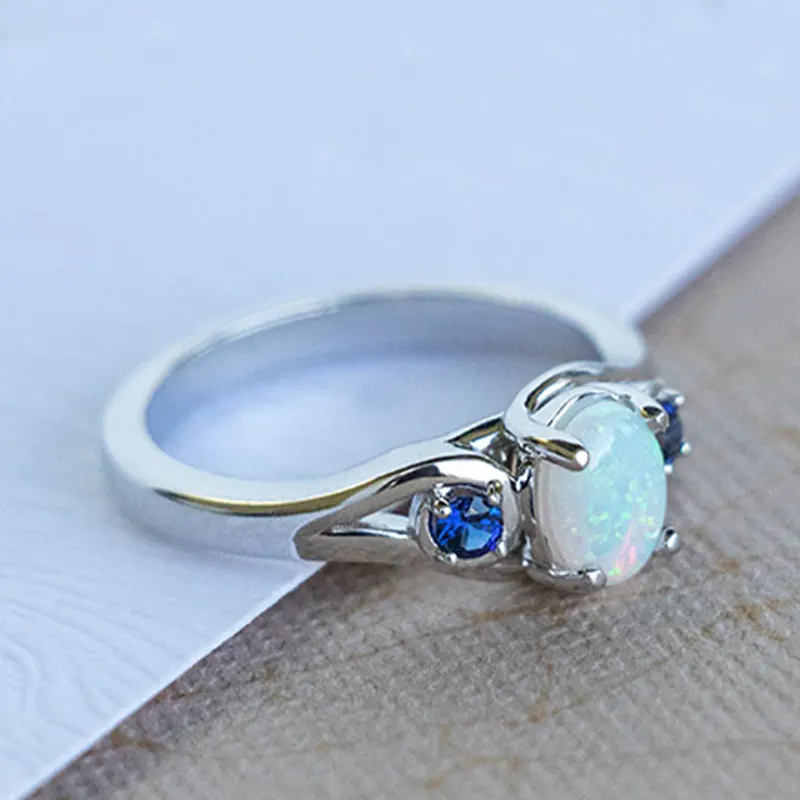
Named for Queen Victoria, jewelry fashioned in the Victorian era was widely influenced by the adored monarch. A Victorian engagement ring might feature colored gemstones like turquoise, amethyst, aquamarine, opals and blue enamel. You might find a secret message engraved on the band or heart-shaped details for an added touch of romance.
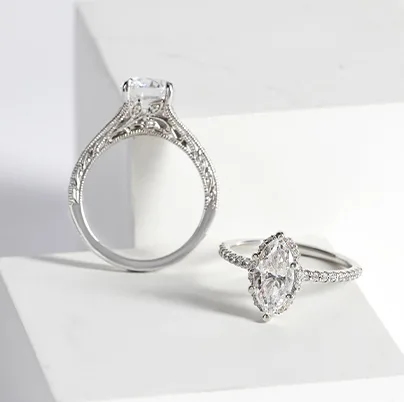
Named after King Edward VII of England, the Edwardian Era falls within the Art Nouveau movement. Pieces from this time period reflect a time of transition, with the bright influences of the Victorian era weening and the industrial feel of Art Deco style fast approaching. An Edwardian engagement ring might feature several diamonds or gemstones paired with monochromatic designs in silver, platinum and yellow gold. Rings in this style often feature intricate metalwork including impressive filigree.
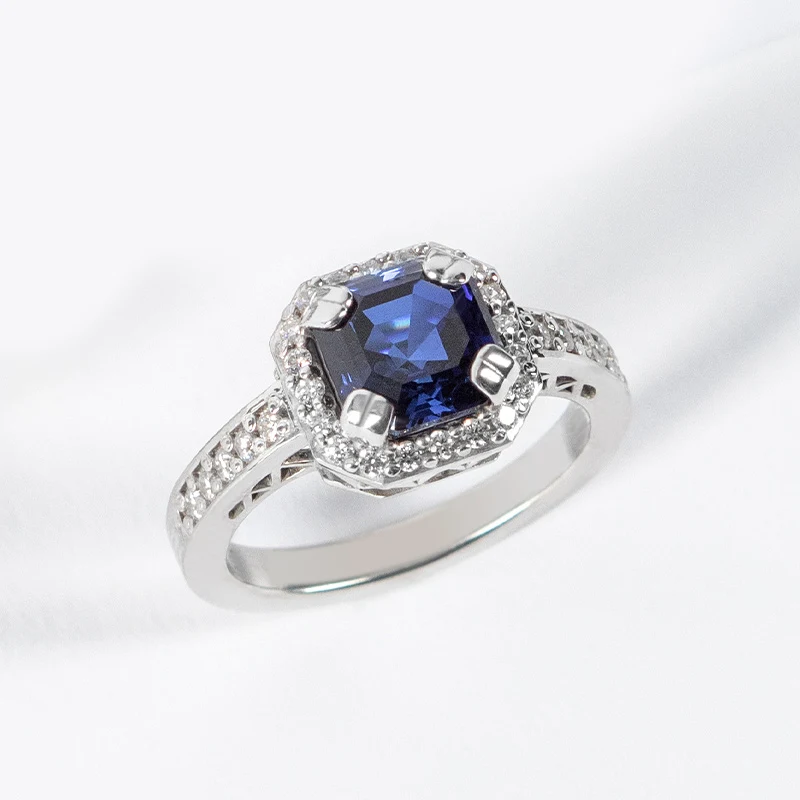
Geometric shapes, rich colors, sharp lines and symmetrical ornamentation were the move in the midst of the Roaring 20s. An Art Deco engagement ring might feature brightly colored gemstones including rubies, sapphires, emeralds and black onyx. In addition to rich colors, platinum engagement ring settings were all the rage during this time period.
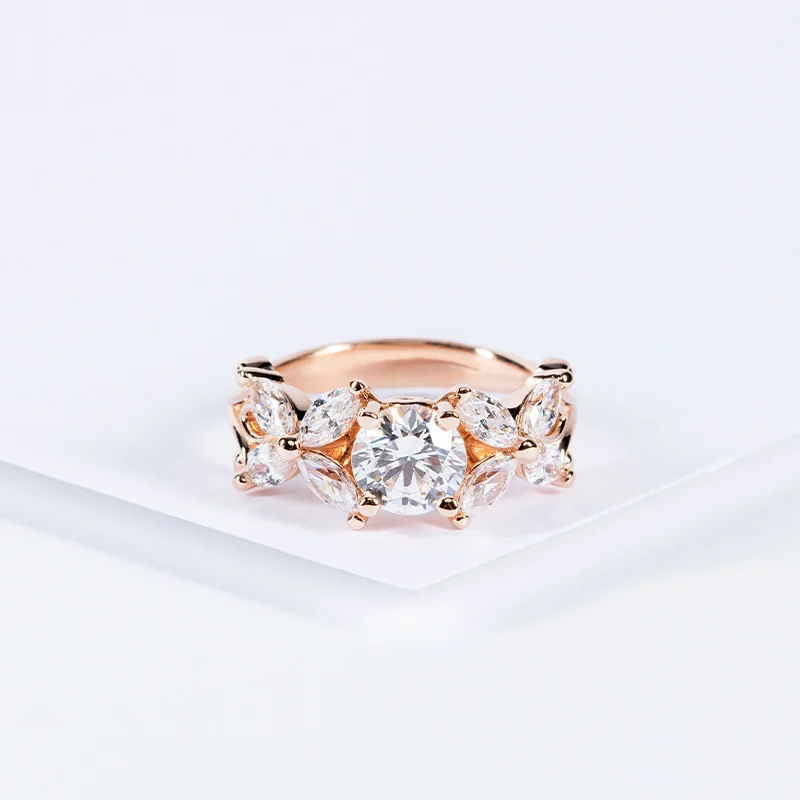
As women began to hit the professional world in the early 1950s, feminine styles filled the fine jewelry market. Pieces from the Retro Era were heavily influenced by Hollywood glamour featuring bold, three-dimensional designs and mixed metals. Expect the unexpected in a Retro engagement ring including girly details like ribbons, flowers and bows for an extra pop of fun.
Best Vintage-Inspired Rings
Vintage Engagement Ring Settings
Halo engagement ring settings feature a center stone surrounded by a concentric circle of smaller stones. This style ring is beloved for its ability to make your diamond look even bigger making the halo the perfect vintage setting for those who love glitz and glamour.
Filigree engagement rings consist of intricate, ornamental metalwork. Different from engraving, the process of filigreeing involves placing embellished metal on top of a piece of jewelry. The result is a truly unique engagement ring that offers a nod to the Edwardian era.

Floral engagement rings fall within the category of cluster diamond rings. In this romantic design, a single center stone is surrounded by several accent stones that are arranged in a flower-like pattern. Similar to the halo setting, floral engagement ring settings are distinctive and create the illusion of a larger carat diamond. With vintage floral engagement rings, your stone doesn’t have to rank the highest on the diamond carat size chart to make a statement.
Three stone settings are a classic take on a vintage style. Featuring a dazzling center stone and two smaller side stones, this setting represents a couple’s past, present and future together. Considering its symbolism, three stone settings make for some of the best vintage engagement rings perfect for very sentimental couples. Opt for baguette cut side stones for an extra-vintage feel.
A minimalistic style that was super popular in the 1920s, when styled with the proper stones, prong engagement rings have an absolutely retro feel. Opt for a four prong setting featuring baguette and single cut diamond accent stones for a vintage vibe.
The timeless diamond solitaire walks the line between simplicity and glamour. Rings in this style are minimalistic featuring a sleek metal band that draws all eyes towards a dazzling center stone. Uncomplicated and chic, a solitaire setting will never go out of style.
Precious Metals
After deciding which setting best suits your fancy, it’s time to determine which precious metal will complete your engagement ring vision. Luckily, when it comes to vintage styles, precious metals run the gamut from rose gold to white gold, the choice is yours.

Rose gold’s unique pinkish hue offers a romantic addition to any vintage engagement ring design. While rose gold has been getting a lot of attention in recent years, this warm-toned metal isn’t the new kid on the block. In fact, this fan-favorite first originated in 19th century Russia, making it a perfect choice for an antique design. Rose gold consists of a combination of pure gold mixed with silver and copper alloys, is easy to care for and will not tarnish over time.
Not your mother’s precious metal, yellow gold is once again rising in popularity in the fine jewelry world. This is especially true of yellow gold rings in the vintage-inspired engagement ring category. If you decide that yellow gold is the perfect metal for you, be wary to take special care of your forever adornment. While undeniably beautiful, yellow gold is among the softest of commonly used engagement ring materials. Remove your vintage piece before partaking in any household cleaning or strenuous activities to keep it looking good as new.
A common choice during the Art Deco period, white gold pairs beautifully with a vintage engagement ring setting. According to howtobuyvintagejewelry.com, 18k white gold that predates 1940 is less likely to yellow than later white gold. This is because more white alloys were added during that time, as opposed to modern white gold which is commonly dipped in rhodium plating to help the metal maintain its coveted icy hue.
Vintage Diamond Cuts
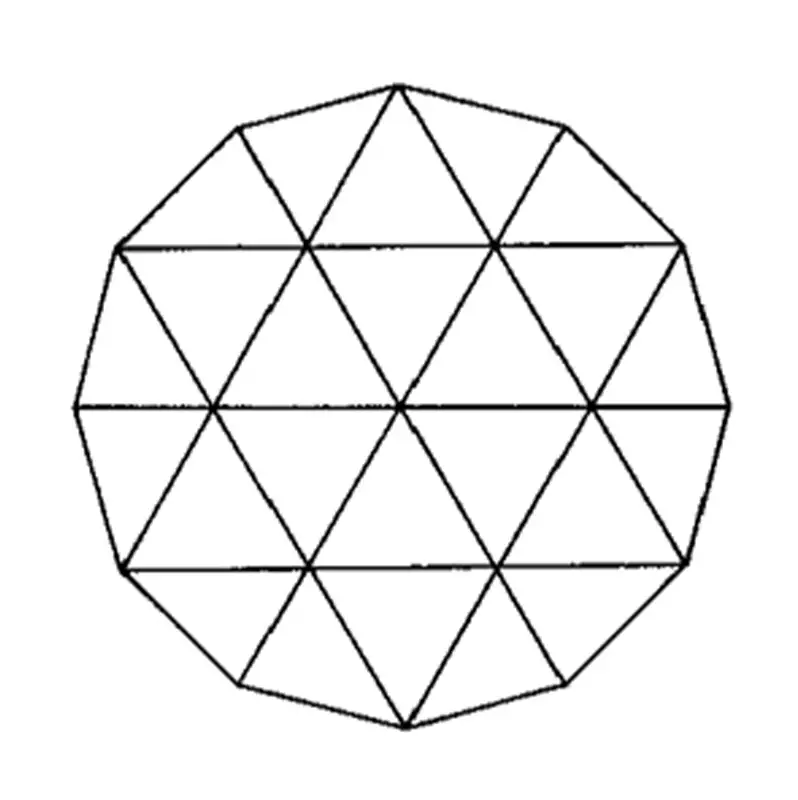
Popular during the Georgian and Victorian eras, the rose cut diamond dates back to the 1500s. With anywhere between three to 23 facets, rose cut diamonds feature a dome-shaped crown and flat bottom. This old-timey stone got its name from its resemblance to, what else, a rose.
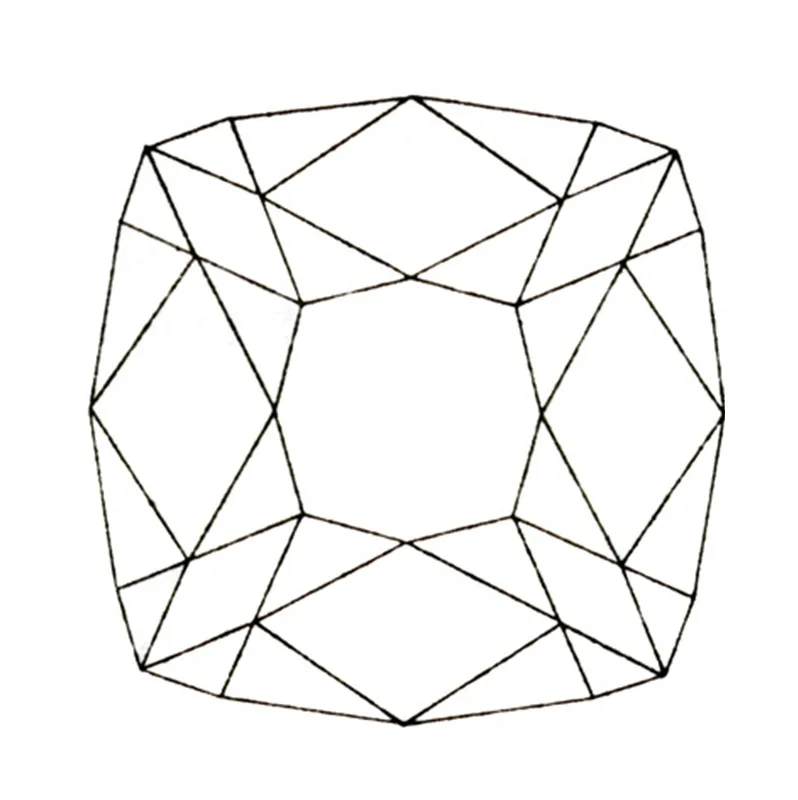
Similar to the modern cushion cut, old mine cut diamonds have a high crown and a large, smooth culet and a small table. This style dates back to the 1700s and was the most prevalent during the Georgian and Victorian eras.
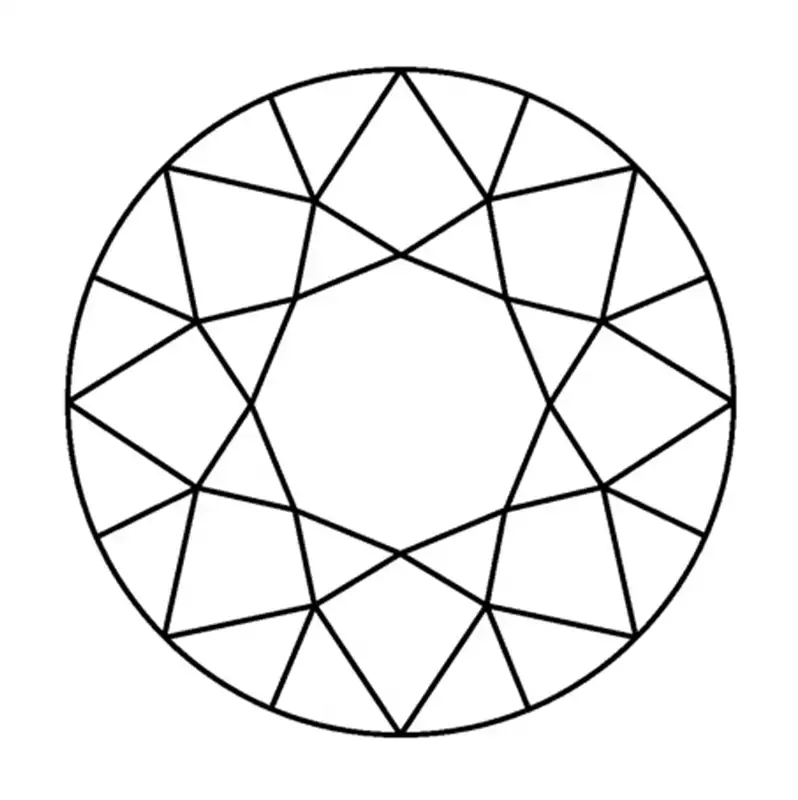
Old European cut diamonds feature a large, flat culet, a small table and a high crown. However, what sets this stone apart from other vintage styles are its dazzling facets and circular girdle. Most popular during the Victorian, Edwardian and Art Deco eras, the old European cut was the inspiration for today’s round brilliant cut diamond.
How to Find Vintage Engagement Rings
Cut out the middleman and shop for your vintage engagement ring online. There are endless retailers that offer vintage-inspired pieces including diamond engagement rings and wedding bands with vintage-era elements. Or, if you can’t find exactly what you’re looking for, consider custom design using a loose diamond or try upgrading an heirloom piece.

Of course, there are pros to shopping locally too, such as the ability to try on rings and shop with your soon-to-be-fiance in person. Additionally, a brick-and-mortar vendor might offer antique engagement rings that you can’t find anywhere else. However, shopping with your local jeweler for a vintage jewelry piece can be more costly than shopping online so be sure to take that into consideration if you’re on a tight budget.
Sources:
https://howtobuyvintagejewelry.com/platinum-vs-white-gold-in-vintage-jewelry
*Here at Diamond Nexus, we strive to provide valuable information while being clear and honest about our products. The Nexus Diamond™ alternative is a patented lab created diamond simulate that, among all simulants, most closely imitates the look, weight and wear of a diamond, with two exceptions – it is absolutely perfect in every way, and it costs significantly less. Price points and environmental facts expressed in this blog were taken from popular online retailers and may vary. Learn more about the environmental impact of mining by visiting our blog.

